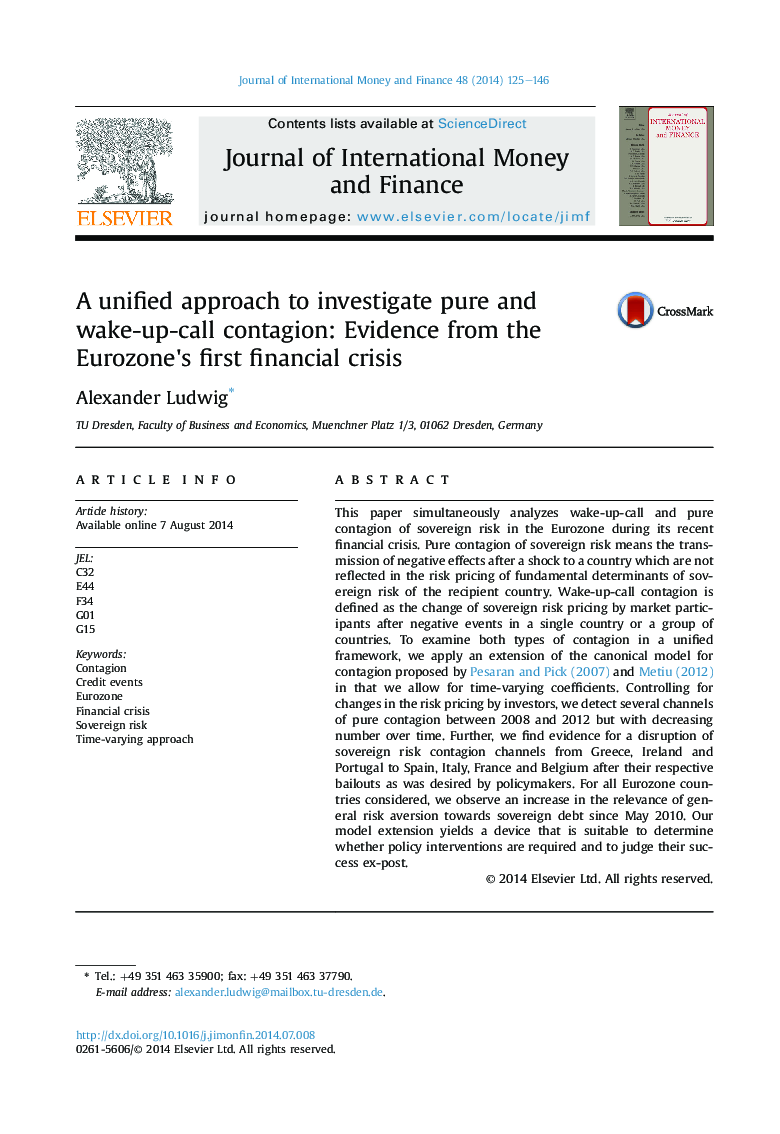| Article ID | Journal | Published Year | Pages | File Type |
|---|---|---|---|---|
| 963788 | Journal of International Money and Finance | 2014 | 22 Pages |
•We examine the evolution of bond yield spreads in the Eurozone in 2008–2012.•We present an approach to simultaneously examine wake-up-call and pure contagion.•To identify pure contagion effects, we control for interdependence.•The rise of spreads can be traced back to both types of contagion.•Bailout programs for Greece, Portugal and Ireland could prevent further contagion.
This paper simultaneously analyzes wake-up-call and pure contagion of sovereign risk in the Eurozone during its recent financial crisis. Pure contagion of sovereign risk means the transmission of negative effects after a shock to a country which are not reflected in the risk pricing of fundamental determinants of sovereign risk of the recipient country. Wake-up-call contagion is defined as the change of sovereign risk pricing by market participants after negative events in a single country or a group of countries. To examine both types of contagion in a unified framework, we apply an extension of the canonical model for contagion proposed by Pesaran and Pick (2007) and Metiu (2012) in that we allow for time-varying coefficients. Controlling for changes in the risk pricing by investors, we detect several channels of pure contagion between 2008 and 2012 but with decreasing number over time. Further, we find evidence for a disruption of sovereign risk contagion channels from Greece, Ireland and Portugal to Spain, Italy, France and Belgium after their respective bailouts as was desired by policymakers. For all Eurozone countries considered, we observe an increase in the relevance of general risk aversion towards sovereign debt since May 2010. Our model extension yields a device that is suitable to determine whether policy interventions are required and to judge their success ex-post.
